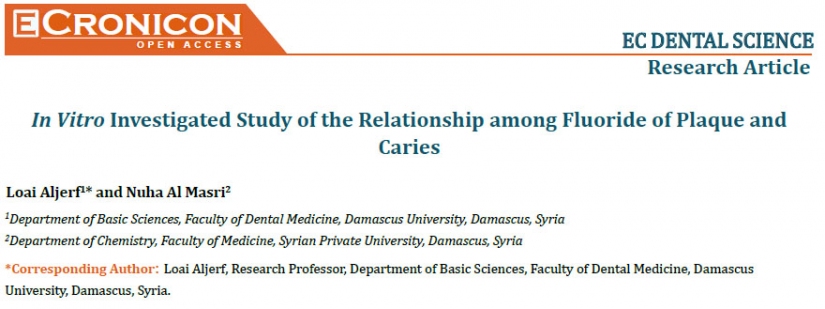Authors
Loai Aljerf and Nuha Al Masri
Published in
EC Dental Science 17.6 (2018): 892-899
Abstract
Many researchers have worked on the relation between individual caries occurrence and total fluoride of plaque including the diverse structures of fluoride, but none gave any real justification about this relation. Thus, we will extend the scope of the study to involve the links between individual caries experience, hydrogen ion content and ionized- and bound- fluoride concentrations in resting plaque. The participants were 75 children (10 - 11 yrs) living in two Syrian towns and received little/no dental care and their oral hygiene was poor. We took from them plaque samples which adhered to the teeth surfaces. Caries prevalence was assessed as decayed, missing and filled surfaces (DMFS). The In vivo and in vitro tests were referred to that no detectable amount of surface enamel was removed during the sampling. We found that the weights of the fermenting plaque were higher, but with no effect of sucrose rinsing, than the resting and plaque water was unvarying in all the samples. Fermenting plaque was more acidic and rich with fluoride more than resting plaque, but with meager quantity of bound fluoride. Moreover, the more acidic samples had significantly higher total fluoride amount. Noticeably, a positive correlation between DMFS and H+ concentration in fermenting plaque was observed which refers to the cariogenic potential of plaque. Consequently, we think that bound fluoride is metabolic which the responsible factor for caries protection is.
Keywords: Fluoride; Caries; Teeth surfaces; Plaque Water; Cariogenic; Bacteria
